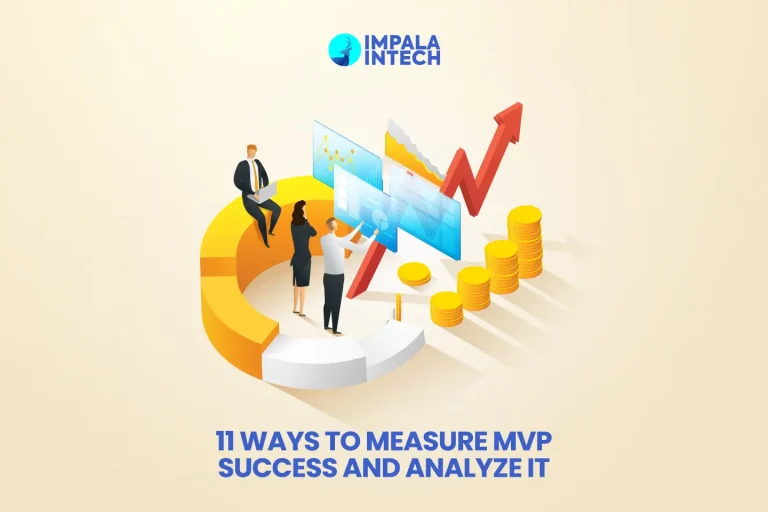
Modern companies depend on cloud systems to manage daily tasks. From HR to cybersecurity, everything now runs online. Managing remote and hybrid teams needs the right digital support. That’s where cloud workforce management software plays a key role.
This kind of software helps track time, manage shifts, and keep operations secure. It also reduces paperwork and human error. Gartner reported that over 72% of organizations now use at least one cloud-based HR or management tool. The reason is clear—efficiency and safety.
Security experts also agree. “Cloud tools can increase visibility and control when used correctly,” said Mark Dalton, a senior IT consultant at TechRadar.
Let’s look at why this technology matters and how it helps companies stay both productive and secure.
What Cloud Workforce Management Means?
Cloud workforce systems work through online servers instead of local machines. That means managers and employees can log in anywhere. The data stays safe in secure cloud storage, backed by real-time encryption.
This helps companies with multiple locations or hybrid workers. A cloud-based workforce management software platform keeps all schedules, reports, and logs in one place.
For cybersecurity teams, this also means better tracking of employee access and activity. Monitoring who logs in, from where, and when becomes much easier.
Our Experience at Impala InTech (Successful Management Software Projects)

At Impala InTech, we have built and delivered two complete cloud workforce management software solutions for enterprise clients in 2024 and 2025. Each project started with one goal — to help businesses manage people and processes safely in the cloud.
The first project was for a logistics company managing more than 2,000 field workers. Their old system was slow and manual. Our team built a cloud-based platform that automated scheduling, attendance, and payroll in real time. Within six months, the client reported a 35% cut in administrative time and better control over worker data.
The second system was developed for a cybersecurity services provider with global offices. They needed a secure, scalable, and compliant workforce platform to track remote teams. We built a custom solution with live dashboards, AI-driven insights, and strong data encryption. After launch, the company saw a 40% drop in missed shifts and faster project coordination across time zones.
Our process focuses on four main steps:
- Understanding business needs through detailed discussion with stakeholders.
- Designing simple, secure systems with user-friendly dashboards.
- Testing every feature before release to ensure smooth performance.
- Providing post-launch support to keep systems updated and stable.
Every project at Impala InTech blends design clarity, technical strength, and strong cybersecurity. We don’t just build tools; we build trust between teams and technology.
Many of our clients reach us after facing issues with older systems or low-performing vendors. We listen, plan, and deliver solutions that actually work — on time and within budget.
If your company plans to create or upgrade a cloud workforce platform, our team is ready to help. Contact Impala InTech to discuss your project and see how a smart, secure cloud system can improve your business operations.
Why Businesses Move to the Cloud?
The biggest reason is cost. Setting up local servers and data centers is expensive. Cloud systems cut setup costs by up to 40%, according to a 2024 IDC report.
Maintenance is simpler too. Updates happen automatically, without stopping operations. That saves time and lowers IT load.
Also, companies no longer worry about losing files to damaged hardware. The system backs up data continuously.
A cloud workforce management software as a service model gives even small companies access to enterprise-grade tools without huge upfront spending.
How Does It Support Industrial Teams?
Cybersecurity teams use this type of software to control user access. With growing remote work, this is critical.
Through the admin panel, teams can assign roles and permissions. For example, only authorized users can see sensitive data. The system logs every action for audit trails.
A 2025 Forbes report said over 60% of data breaches start with weak internal access controls. Cloud systems reduce that risk by enforcing strong password and identity checks.
Many providers now include multi-factor authentication and AI-based threat alerts. These help detect unusual behavior before it causes damage.
Key Features of Cloud-Based Workforce Management Software

A well-designed platform offers more than time tracking. Here are common features:
- Shift Scheduling: Automates staff assignments based on skills and availability.
- Time and Attendance: Logs employee hours without manual entry.
- Payroll Integration: Connects hours worked with payment systems.
- Data Security: Uses encryption and access control to protect records.
- Analytics Dashboard: Shows trends in performance, time use, and compliance.
Companies can customize these features based on their goals. Some focus on automation. Others need strong security or compliance reports.
1. Data Security and Compliance
Data protection is a growing concern. Businesses handle sensitive employee details daily. Cloud systems follow strict security standards like ISO 27001 and SOC 2.
They also support compliance with privacy laws such as GDPR and HIPAA. This helps cybersecurity leaders avoid penalties from poor data handling.
As IBM’s 2023 report noted, data breaches cost companies an average of $4.45 million each year. Strong encryption and audit tools inside workforce platforms lower that risk.
2. Benefits for Large and Small Companies
Whether you run a 50-person startup or a 10,000-employee enterprise, the benefits stay clear.
- Centralized control
- Real-time insights
- Reduced paperwork
- Better scheduling accuracy
- Improved security and compliance
For smaller teams, the cloud offers scalability. You pay for what you use and expand later. Large firms enjoy the flexibility of global data access.
3. Integration with Other Tools
Modern platforms link smoothly with existing systems. Payroll, HR, and cybersecurity tools connect through APIs.
For example, a cloud-based workforce management scheduling software can sync with Microsoft 365, Zoom, or Slack. This keeps communication open and efficient.
Integrating cybersecurity platforms allows monitoring login patterns and employee behavior in real time. This lowers risk while improving team coordination.
How Artificial Intelligence Improves Management?

AI makes data more useful. It studies attendance, shift changes, and project time. The system can then suggest improvements automatically.
Some tools even predict staff shortages or overtime risks. This helps managers act early.
According to Deloitte, AI-based scheduling can reduce labor costs by up to 20%. Combined with cloud access, it becomes a strong productivity booster.
Remote Work and Global Teams
Cloud management systems support teams in different countries and time zones. Each user gets access in their local time and language.
This supports global operations, especially for cybersecurity and IT service companies. Teams can share logs and updates without sending endless emails.
A study by PwC found that 83% of companies using cloud workforce systems saw faster project completion rates. That shows how real-time data sharing boosts output.
Cost Control and Performance
Tracking hours and project time gives better cost visibility. Managers see which tasks take more effort and which save time.
Budget planners use this data to predict future spending. It also helps measure productivity by department.
Since the software runs online, updates and fixes happen instantly. No need to pause work for IT maintenance.
Scalability and Growth
Cloud-based tools grow with your business. Adding new users takes minutes, not days. You can expand from one branch to many without starting from scratch.
This flexibility supports cybersecurity firms that handle changing workloads or temporary project teams.
Scalable plans also control spending. You pay only for active users, keeping budgets tight and predictable.
Data Transparency for Cybersecurity Oversight
Every login, change, and update gets recorded. That helps cybersecurity teams check who accessed what.
It’s easier to detect anomalies or unusual activity. Quick detection prevents security threats from spreading.
This transparency builds accountability. Leaders can review reports anytime, ensuring no blind spots in data control.
Challenges and How to Manage Them
Like any system, cloud platforms face a few challenges. Internet outages can stop access temporarily. Also, companies must train staff to use the tools properly.
Another issue is vendor reliability. Always choose trusted providers with proven uptime and strong service-level agreements.
A little planning solves most of these issues. Regular audits and backup plans keep systems safe and steady.
Expert Insight
According to Sarah Lopez, a senior cybersecurity analyst at DataGrid, “Cloud management tools give better oversight than traditional systems. The main benefit is constant monitoring with less manual work.”
Her view reflects growing trust in cloud solutions across industries. Many IT leaders now treat the cloud as part of their long-term defense strategy.
The Future of Workforce Management
The next generation of tools will focus on automation, data security, and predictive analytics.
Cloud systems will combine AI and machine learning to forecast workload needs. This helps businesses prepare early for high-demand periods.
Cybersecurity integration will go deeper too. Threat detection will become automatic, giving managers early warnings.
Experts predict that by 2030, over 90% of workforce management systems will be cloud-based.
What to Look for in a Cloud Provider?
Here’s what decision makers should check before choosing a solution:
- Data encryption and backup policy
- System uptime and reliability rate
- Integration with existing cybersecurity tools
- Scalability options
- Transparent pricing
The right choice saves money and strengthens overall company security.
Final Thoughts
The shift to cloud systems is not just a trend. It’s a smart move for business growth and safety.
Cloud workforce management software brings together people, processes, and protection in one place. For cybersecurity leaders, it adds real control and visibility.
As one industry expert said, “Cloud systems don’t just organize teams—they protect them.”
Companies ready to adapt will see smoother operations, safer data, and better teamwork. The future of workforce management is not only online—it’s secure, simple, and scalable.
FAQs
How does cloud workforce software help with staff training?
It tracks training progress, hours spent, and course completion. Managers can view records and plan future sessions easily.
Is data stored in one location or multiple data centers?
Cloud vendors usually store data across several secure servers. This keeps information safe, even if one server fails.
What support do companies get after implementation?
Most vendors, including Impala InTech, provide ongoing updates, security checks, and helpdesk support to keep systems running smoothly.








